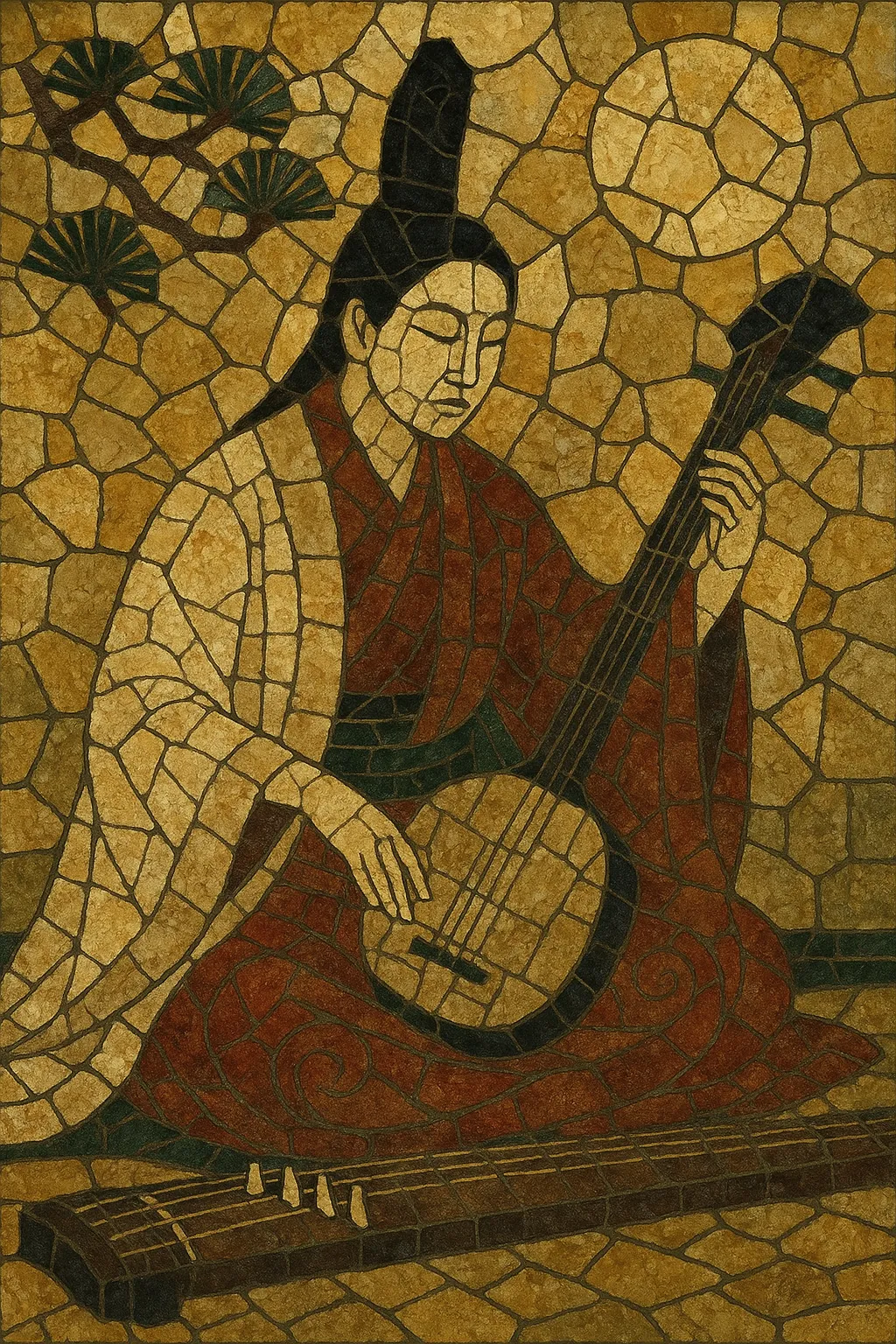Japanese classical refers to the courtly, religious, theatrical, and chamber traditions that crystallized in Japan from the Nara and Heian periods onward. It encompasses Gagaku (imperial court music), Shinto ritual music (kagura), Buddhist chant (shōmyō), Noh and Kabuki repertories (e.g., nagauta, jōruri), and chamber music for koto, shamisen, and shakuhachi (sankyoku).
The style emphasizes modal color (ryō and ritsu modes, along with later in/yo pentatonic variants), the dramatic architecture of jo–ha–kyū (slow introduction, development, swift conclusion), and the aesthetic of ma (meaningful silence/space). Textures are often heterophonic or layered, timbres are cultivated for breathy, reedy, and bell-like colors (e.g., shō, hichiriki, ryūteki), and rhythm can range from free-flowing chant to stately ceremonial cycles. The result is a contemplative yet ceremonially powerful sound world distinct from Western common-practice tonality.
Buddhism and continental court traditions entered Japan via China and Korea, shaping early imperial ritual music. Gagaku (court music) and bugaku (court dance) formalized during the Heian period, drawing on Chinese yayue and Korean aak while becoming distinctly Japanese. Instruments such as shō (mouth organ), hichiriki (double reed), ryūteki (transverse flute), and an array of percussion defined the court ensemble. In parallel, Shinto ritual music (kagura) and Buddhist chant (shōmyō) established sacred lineages.
The concept of jo–ha–kyū emerged as a broad dramaturgical principle across music, theater, and dance. Noh theater consolidated with hayashi ensembles and yōkyoku chant. By the Edo period, urban culture fostered chamber and theatrical genres: sankyoku (koto, shamisen, shakuhachi), jiuta and sōkyoku repertories for koto and shamisen, nagauta for Kabuki, and narrative jōruri styles (e.g., Gidayū-bushi). Masters such as Yatsuhashi Kengyō codified koto practice and modal materials.
Modernization brought conservatories, publishing, and new instrument-building refinements. Composers and virtuosi expanded the classical idiom with original works that interfaced with Western practices while retaining Japanese modes and timbres. Michio Miyagi’s pieces for koto (e.g., Haru no Umi) popularized traditional instruments in concert settings and radio-era media.
Specialist ensembles (e.g., Imperial Household Agency Music Department, Reigakusha) preserve and perform court repertories, while artists and composers create new pieces for traditional instruments and mixed ensembles. The aesthetics of ma, jo–ha–kyū, and pentatonic modality have influenced film and game scoring, experimental composition, and modern stage traditions such as ensemble taiko (kumi-daiko).


